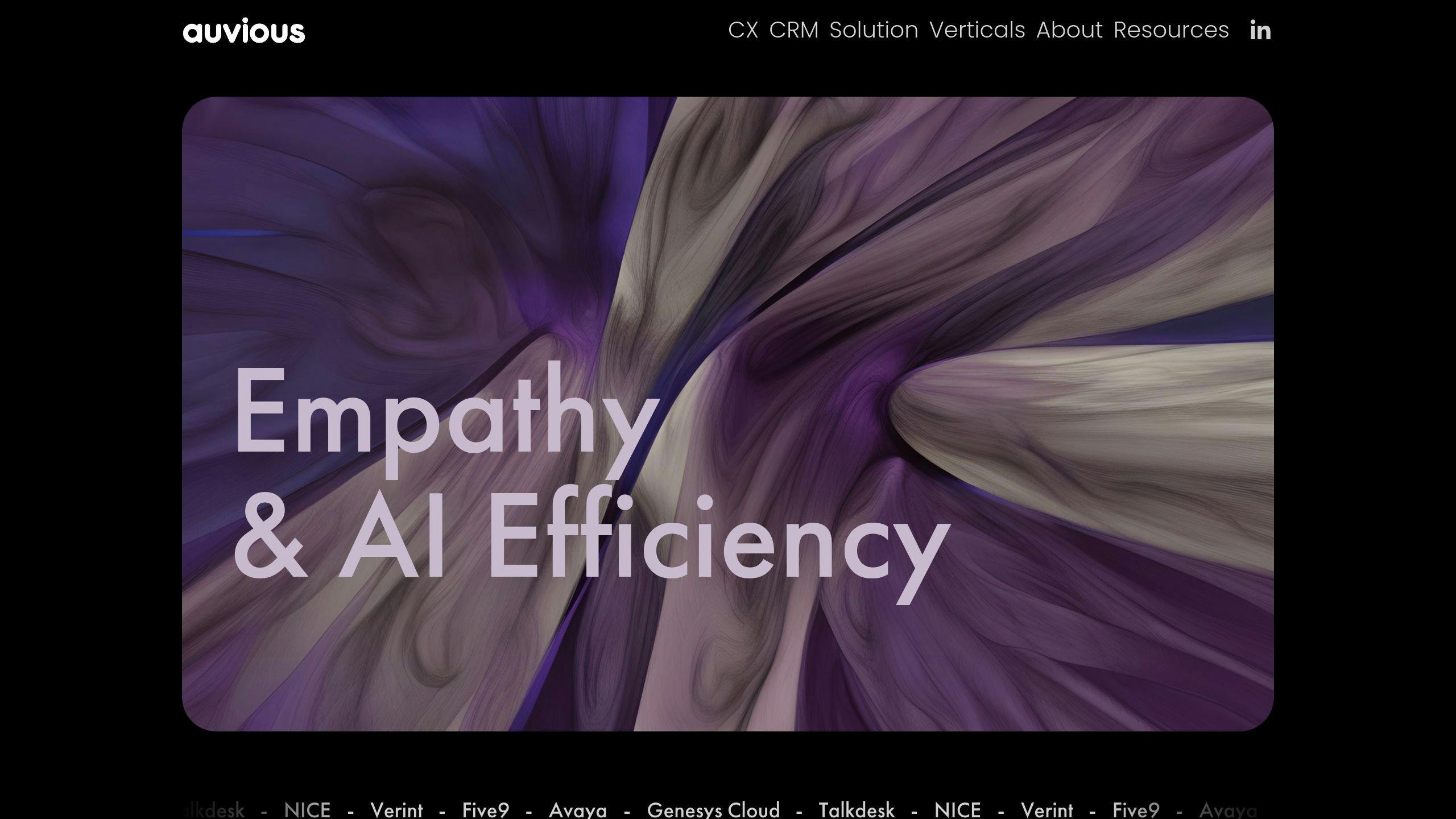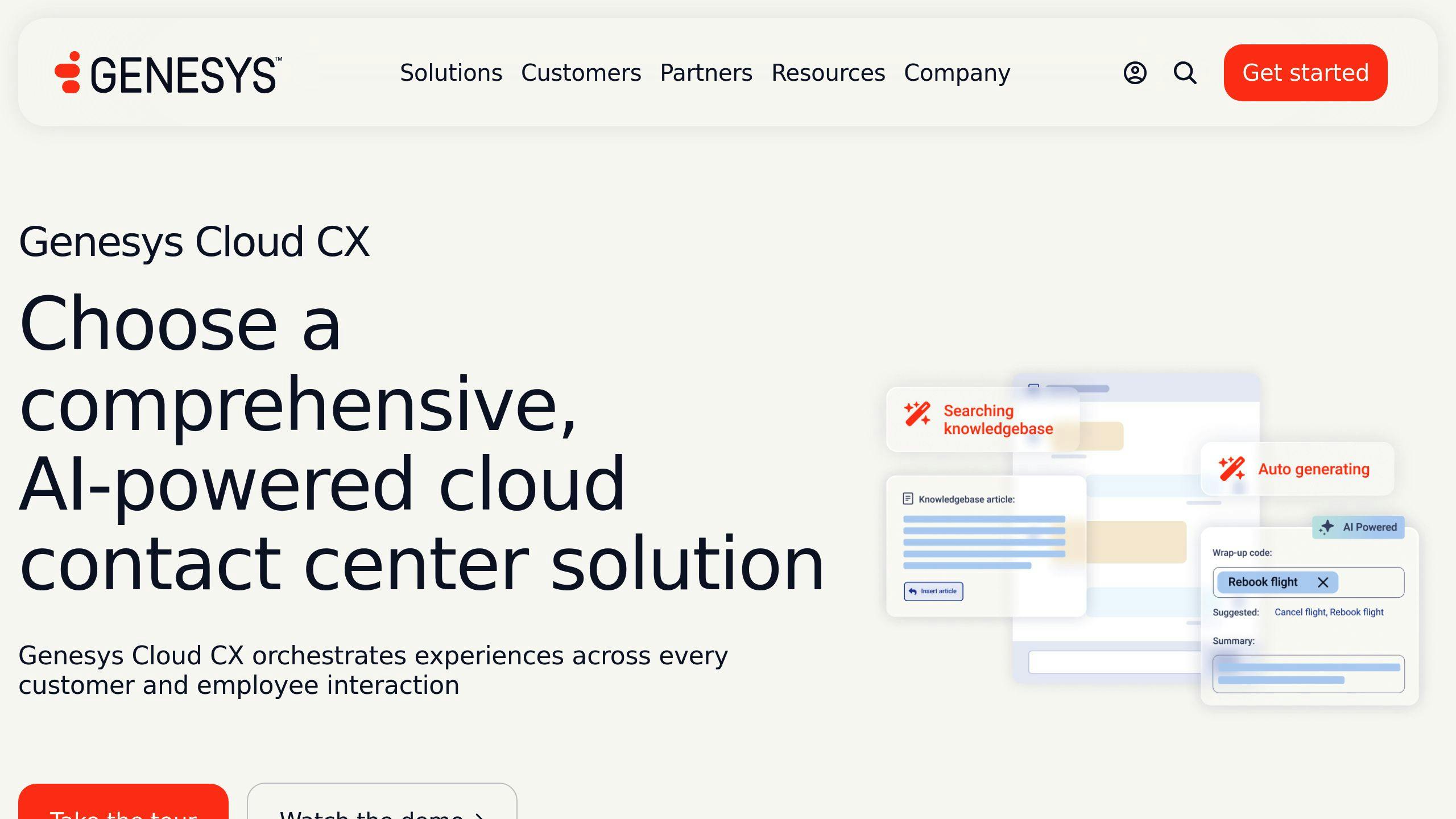AI vs Human Support: Finding the Right Balance
AI vs Human Support: Finding the Right Balance
AI or human support? The best customer service combines both. AI handles repetitive tasks quickly, while humans solve complex problems with empathy.
Key Takeaways:
- AI excels at 24/7 availability, speed, and managing high-volume queries.
- Humans shine in emotional, creative, and personalized problem-solving.
- Hybrid models balance the two: AI for routine tasks, humans for complex or emotional issues.
| Support Type | Best For | Why |
|---|---|---|
| AI-First | Routine inquiries | Fast, consistent, scalable responses |
| Human-First | Complex/emotional issues | Empathy, creativity, and tailored solutions |
| Hybrid Approach | Technical support | AI diagnostics + human expertise |
The key is seamless integration: let AI handle the basics and free up humans for what they do best. Keep reading to learn how to implement this effectively.
Understanding AI and Human Support
AI Support: Features, Strengths, and Limitations
AI is great at managing a high volume of routine questions with quick, automated replies. It has reshaped customer support by offering several key advantages:
| Strength | Description |
|---|---|
| Availability & Speed | Provides 24/7 instant responses to customer inquiries |
| Consistency | Delivers uniform, error-free answers across interactions |
| Scalability | Can manage multiple queries at the same time effortlessly |
| Data Processing | Processes large data sets to offer actionable insights [5] |
But AI has its limits. Its biggest drawback? A lack of emotional understanding [1]. It often struggles with issues that require context, empathy, or creative thinking [2].
Human Support: Features, Strengths, and Limitations
Human agents bring qualities to the table that technology simply can't replicate, especially when dealing with complex or sensitive customer needs [1][2].
| Aspect | Strengths | Limitations |
|---|---|---|
| Complex Problem Resolution | Offers creative solutions and sound judgment in delicate scenarios | Cannot handle high volumes efficiently |
| Customer Connection | Shows empathy and builds relationships | Performance can be affected by fatigue and stress |
| Adaptability | Provides tailored responses to unique situations | Comes with higher operational costs |
Human agents shine in areas like:
- Understanding emotions and tailoring interactions for a personal touch
- Solving complex problems with creative approaches
- Building meaningful, long-term customer relationships [1]
That said, human support faces challenges such as limited capacity and higher costs compared to AI-driven solutions [2].
Exploring the Role of AI Chatbots in Hybrid Customer Support
::: @iframe https://www.youtube-nocookie.com/embed/FZ0PA1rQJUw :::
Balancing AI and Human Support: The Hybrid Model
Combining the speed of AI with the empathy of human agents creates a well-rounded customer service experience. This approach ensures efficiency while addressing the emotional and complex needs of customers.
Choosing AI or Human Support
The success of a hybrid model depends on matching the right type of support to the right situation:
| Interaction Type | Recommended Support | Why It Works |
|---|---|---|
| Routine Inquiries | AI-First | Handles repetitive tasks quickly and is available 24/7 |
| Complex Problems | Human-First | Requires judgment and creative problem-solving |
| Emotional Issues | Human-First | Demands empathy and personalized attention |
| Technical Support | Hybrid Approach | AI helps with diagnostics; humans step in for solutions |
Smooth transitions between AI and humans are critical. Features like a clear "Talk to a Person" button make it easy for customers to escalate when needed. Once roles are clearly defined, the focus shifts to ensuring AI and human agents work together effectively.
Integrating AI with Human Teams
Making AI and human teams work seamlessly requires careful planning and ongoing adjustments:
1. Training and Development
Equip human agents to interpret AI suggestions, step in when needed, and maintain clear communication with customers.
2. Workflow Optimization
Leverage AI to assist during live interactions by suggesting responses or automating repetitive tasks, freeing up human agents for more complex issues.
3. Quality Assurance
Regularly review both AI and human performance to maintain high service standards:
- Check AI's accuracy and relevance in responses.
- Evaluate when and how human agents intervene.
- Collect customer feedback to improve the support process.
sbb-itb-429ed66
Examples and Tools for Hybrid Support
To create a successful hybrid support model, businesses can use tools that blend AI's speed and precision with the personal touch of human support.
Auvious Video: AI-Driven Video Support

Auvious Video demonstrates how AI and human support can complement each other. It integrates features like co-browsing, augmented reality, and sentiment analysis with human-led assistance, enabling real-time, interactive customer support.
Other Tools: Genesys Cloud and More

Platforms such as Genesys Cloud, Zendesk, Freshdesk, and Salesforce Service Cloud provide a mix of features, ranging from AI chatbots and video conferencing to CRM integration. These tools cater to businesses of various sizes and needs.
| Platform | Key Features | Best For |
|---|---|---|
| Genesys Cloud | High-quality video calls, screen sharing, recording | Large-scale support operations |
| Zendesk | AI chatbots, multi-channel integration | Comprehensive customer service |
| Freshdesk | Video conferencing, AI-based routing | Small to medium-sized businesses |
| Salesforce Service Cloud | Automated workflows, AI-driven insights | CRM-focused support |
These platforms highlight how businesses can balance automation with personalized service. By using these tools wisely, companies can build a hybrid support system that enhances customer satisfaction and streamlines operations.
Conclusion
Customer support continues to evolve, offering fresh ways to improve service by blending AI tools with human expertise. This hybrid approach leverages AI's ability to handle routine tasks efficiently while relying on human agents for empathy, creative thinking, and complex problem-solving. Together, they create a well-rounded solution that meets a wide range of customer needs.
To make the most of this model, businesses should focus on three key areas:
- Strategic Integration: Understand customer journeys to pinpoint where AI can streamline processes and where human involvement is crucial.
- Performance Analysis: Regularly review metrics to fine-tune the balance between AI and human support.
- Smart Technology Choices: Invest in tools that ensure smooth transitions between AI and human agents.
Platforms like Auvious Video and Genesys Cloud highlight how technology can complement human skills rather than replace them. These tools demonstrate how hybrid models can help businesses provide both efficient service and a personal touch, resulting in a stronger overall support system.
FAQs
What are the main differences between human intelligence and AI when it comes to handling customer support?
AI and human support each bring distinct strengths to the table. AI is fast, consistent, and scalable, making it great for handling repetitive tasks. On the other hand, humans excel in dealing with complex or emotionally charged issues where empathy and problem-solving are key [1][4].
For instance, AI is ideal for managing FAQs and simple transactions. But when it comes to situations like insurance claims, 49% of customers prefer working with a human advisor. This shows how critical empathy is in certain scenarios [3].
"AI's true potential lies in enhancing, not replacing, human capabilities"
David Derigiotis highlights the importance of combining AI and human strengths [3]. AI efficiently tackles routine tasks, while human agents step in for more nuanced, emotional challenges. The best results come from using each resource where it can make the biggest difference for customers [1][4].
To make the most of this partnership, organizations should focus on designing AI systems that are user-friendly and improve the overall customer experience. A hybrid approach that blends AI's efficiency with human empathy can create a more effective support system [2].
